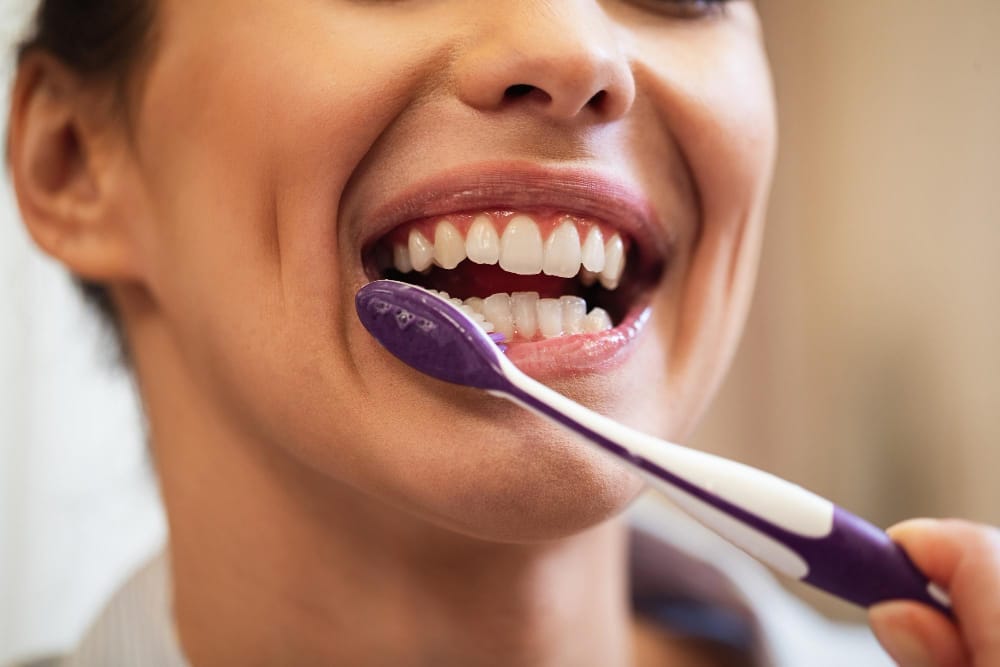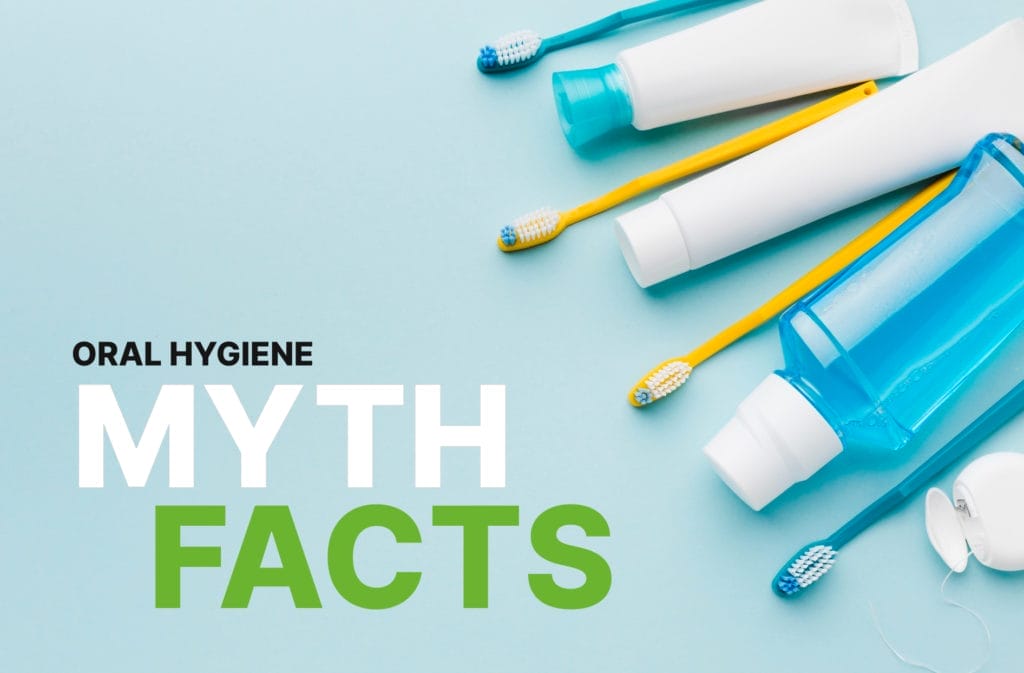This article about common oral hygiene myths and facts is your go-to guide for dispelling common misconceptions and embracing the truths of dental care.
Read on to uncover the realities of oral hygiene and how they can transform your daily dental routine.

Debunking Popular Oral Hygiene Myths
In the world of oral health, myths can often lead to misconceptions, impacting how we care for our teeth and gums. It’s essential to debunk these myths to ensure we follow the best dental health practices.
Let’s clear up some of the most common oral hygiene myths.
Myth 1: Sugar is the Sole Cause of Cavities
One of the most prevalent myths is that sugar is the only culprit behind cavities. While it’s true that sugary foods can contribute to tooth decay, they are not the sole cause.
Cavities are formed when bacteria in the mouth feed on any carbohydrate, not just sugar. This includes starches and other foods that break down into sugars. These bacteria produce acids that erode tooth enamel, leading to cavities.
While limiting sugar is beneficial, maintaining a comprehensive oral hygiene routine is equally important for cavity prevention.
Myth 2: Bleeding Gums Are Normal
If you notice bleeding gums while brushing or flossing, it’s not something to brush off as normal.
Bleeding gums can be a sign of gingivitis, an early stage of gum disease. This condition is often caused by plaque buildup along the gum line.
If left untreated, it can progress to more serious forms of periodontal disease, leading to tooth loss and other health issues.
Routine dental checkups and proper oral hygiene can help prevent and treat gingivitis.
Myth 3: Harder Brushing Equals Cleaner Teeth
The belief that brushing harder leads to cleaner teeth is a common misconception.
In reality, aggressive brushing can damage tooth enamel and irritate the gums. The key to effective brushing is not the force but the technique and consistency.
A soft-bristled toothbrush and gentle, circular motions are the best ways to clean teeth and protect oral health.
Myth 4: Flossing Isn’t Necessary
Flossing is often overlooked in daily oral hygiene routines, but it plays a crucial role in maintaining healthy teeth and gums.
Regular flossing removes food particles and plaque between the teeth and under the gumline, areas a toothbrush can’t reach.
Flossing helps prevent tooth decay and gum disease and improves overall health.
Myth 5: Chewing Gum is a Substitute for Brushing
While chewing sugar-free gum can benefit oral health, as it stimulates saliva production and can help cleanse the mouth, it is not a substitute for brushing.
Brushing your teeth twice a day with fluoride toothpaste is essential for removing plaque, preventing cavities, and keeping your gums healthy.
Chewing gum should be seen as a complement to, not a replacement for, regular brushing and flossing.
Facts Behind Oral Hygiene
Moving beyond myths, it’s crucial to focus on oral hygiene facts.
Understanding these truths can profoundly impact your approach to dental care and overall health.
Fact 1: Oral Health is Linked to Overall Health
A vital truth in dental care is the strong connection between oral and overall health.
Poor oral hygiene can lead to dental issues like gum disease, which has been linked to more serious health problems, including heart disease, diabetes, and stroke.
The mouth is a gateway to the body, and bacteria from the mouth can enter the bloodstream, potentially causing inflammation and disease elsewhere.
Maintaining good oral health is a critical component of overall wellness.
Fact 2: Regular Dental Checkups are Crucial
Regular dental checkups are more than just a means to a clean smile; they are crucial to maintaining overall health.
These visits allow dentists to detect early signs of tooth decay, gum disease, and even more severe conditions like oral cancer. Early detection often results in more straightforward and more effective treatments.
Dentists also provide valuable advice on personal oral care, ensuring that your daily routine is as effective as possible.
Fact 3: Baby Teeth Health is Important
The health of baby teeth sets the stage for the health of adult teeth. Poor oral health, such as cavities and dental issues, in baby teeth can affect the development of permanent teeth and lead to future dental problems.
Teaching children good oral hygiene habits and developing a good oral care routine from a young age is essential for their long-term dental health.
Fact 4: Dental Fillings and Their Safety
Dental fillings, particularly amalgam fillings, have been a topic of discussion regarding their safety due to the presence of mercury.
However, extensive research and clinical studies have shown that amalgam fillings are safe, durable, and effective.
The American Dental Association and other health agencies support using these fillings. Alternative materials are available for those who prefer a different option.
Fact 5: Prevalence of Gum Disease
Gum disease, or periodontal disease, is more common than many might think. It affects a significant portion of the adult population and can lead to tooth loss and other health complications if left untreated.
Regular brushing, flossing, and dental checkups are key to preventing gum disease.
Fact 6: Oral Health During Pregnancy
Hormonal changes during pregnancy can increase the risk of developing gum disease, which, in turn, can affect the health of the unborn baby.
Pregnant women should not overlook their oral health and are encouraged to continue with regular dental check-ups and good oral hygiene practices.
Take Charge of Your Oral Health: Act on These Myths and Facts Today
Every myth debunked and every fact embraced brings you closer to optimal dental health.
Whether scheduling regular dental checkups, re-evaluating your brushing technique, or understanding the broader implications of oral health, each action is a stride towards a healthier you.
If you have more questions or need expert guidance on your oral health journey, contact Peak Dental Arts today. Dr. Craig Lanik and the rest of the dental family are ready to provide personalized advice and top-quality care.

